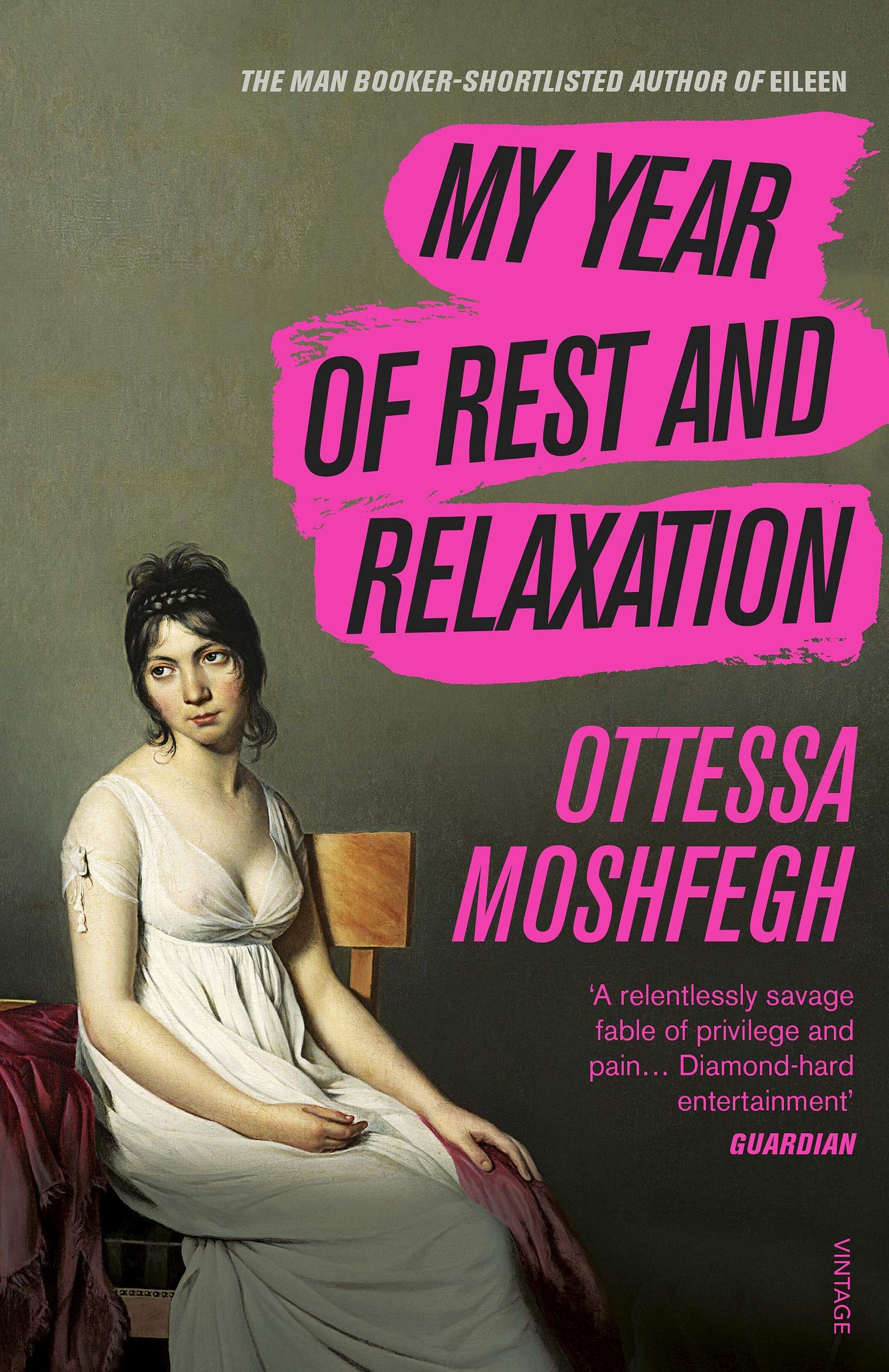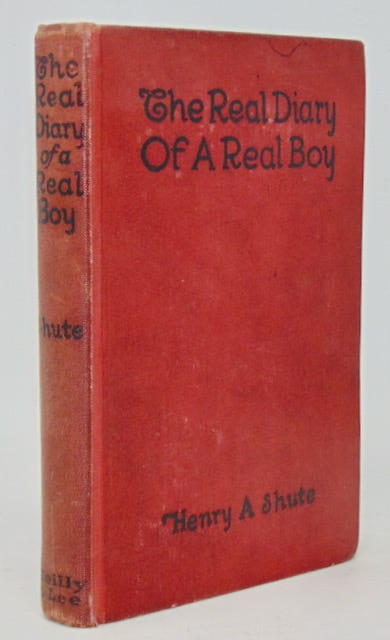[Note: Put cursor over footnote for pop-up.]
Welp . . . it's August, beach-read time. However, since readers of this Substack are way too toney for that kind of thing (plus many of us haven't been out in the sun for decades), I offer an alternative.
First, I guess we should decide what "guilty pleasure" means. If you're a high-brow type but slum it and read The Postman Always Rings Twice or Gone Girl or this season's diabolical thrill-fest, does that make those novels "guilty pleasures"? Does "guilty pleasure" equal "trashy"? Does re-reading Persuasion or Pride and Prejudice every couple of years count? Is it a guilty pleasure book if you slip it under the sheet when your S.O. ambles in? You see the problem—in no time we're in "the definition of a phallic symbol" territory.1 2
Let's move on. The books listed below are from my own guilty pleasure list.
In keeping with the stringent terms I've tried to establish for this Substack, I ask you to read (at least) two (2) of them . . .
. . . but, oh, how sad I'd be if they didn't include either of the first two. [As we all know, men behaving badly is no longer funny, so I've provided two examples of women behaving badly.]
And the rest:
Black Wave, Michelle Tea (2017) 5
Stump, Niall Griffiths (2003) 6
The Restraint of Beasts, Magnus Mills (1998) 7
The Thought Gang, Tibor Fischer (1994)
Trainspotting, Irvine Welsh (1993)
Fear and Loathing in Las Vegas, Hunter S. Thompson (1971)
Puckoon, Spike Milligan (1963)
Billy Liar, Keith Waterhouse (1959)
At Swim-Two-Birds, Flann O’Brien (1939)
Right Ho, Jeeves, P. G. Wodehouse (1934)
The Real Diary of a Real Boy, Henry A. Shute (1902) 8
And, a final requirement: I feel that this list is insufficiently robust, too insular, so after you've knocked off one or two of mine, add (at least) one of your own.
I'm not kidding!!!
"Anything longer than it is wide."
I read Gone Girl twice actually, the second time to see how the hell she pulled it off.
I did actually feel kinda guilty about how much I loved reading this. It gnawed away to me to the point where I was forced to read it again. Yep, clearly there's something wrong with me. But I knew that already since, my go-to, when I need cheering up, is a few minutes of:
And you might have a look at Mossfegh's early novella, McGlue (2014), but it's, um, not for everyone.
Queer/riot grrrl/sci-fi mashup. I subscribe to a U.K. press called & Other Stories; their edition of Black Wave was the first book I was sent; I took it with me to a teaching residency, holed up in my room devouring it when I was supposed to be, you know, interacting with people. It was subsequently re-issued by Amethyst Editions, founded by Tea.
One-armed guy on the lam from a pair of hitmen, each chapter getting them nearer to a certain destination in Wales.
Griffiths [I should probably mention that an earlier novel was called Sheepshagger] has another, Kelly and Victor (2002), which does a deep dive into young druggie lust. Not for the faint-hearted.
My first Magnus Mills. Black humor drollery. I didn't bond with some of his later books . . . but then there was Explorers of the New Century (2005). The blurb starts out: It is the beginning of the century, and two teams of explorers are racing across a cold, windswept, deserted land to reach the furthest point from civilisation.
The writing has the flavor of a boy's adventure book of yore. But, you see . . . nope, not going to spoil it for you.









I believe that every serious writer should read romance novels once in a while. Not "romantic" novels, but Romance Novels of the Harlequin and Mills & Boone type (though many of the best and most successful in the genre these days are self-published). Yes, we literary purists turn our pointy noises up at them, dismissing them as trashy writing. Nothing could be further from the truth. Yes, they are formulaic stories, but they are NOT BAD WRITING. How could they be bad? With tens of thousands of new romance novels published every month, there is only one way to stand out in the genre, or even be published: formulaic stories and slick, masterful prose. Going back to those tens of thousands published monthly, imagine the challenge of having to write about licking, sucking, fingering, clutching, and poking (or being poked) in an original way. Meanwhile, depending on which Harlequin imprint one is writing for, the story must be precisely 60,000 words (I've removed the protection on numerous e-books and done word counts, and they are always within 5 or 6 words of 60,000 in one series, 50,000 or 70,000 in others). The female lead is always brilliant, speaks in snark, and kind of a priss. The male lust interest is either a billionaire or a cowboy or a pirate, knee-weakeningly handsome, taciturn, and devoid of any personality. The dirty deed always happens between pages 85 and 87 (I'm not making this up, I've kept track). Meanwhile, every single word and sentence has to count, the prose is compact and confident, the story remains lightning-focused. This takes enormous skill and practice to achieve, find publication, and to win loyal readers. I challenge any "literary" writer to adhere to a precise outline and produce something unputdownable in exactly 60,000 words. Such strict limitations can bring out the greatest creativity in us. Try it once, and you'll gain enormous respect for the professionalism and, yes, the art, of authors who achieve this on a bimonthly basis. I repeat: every serious writer should read romance novels. As an occasional guilty pleasure, they beat literary novels about self-pitying drugged-out twenty-somethings every time.
Here is my Goodreads review of THE ITALIAN DUKE'S VIRGIN MISTRESS by Penny Jordan:
https://www.goodreads.com/review/show/1421768172
Another must-read for serious writers is Cowboy Novels. I don't mean the socially acceptable ones from Larry McMurtry (though those are great). I mean run-of-the mill westerns. They invariably offer lessons in how to transform settings and landscapes into characters, employing cinematic descriptions and metaphors. It's often the natural environment that is the antagonist, not some gun-slinging outlaw. How many ways are there to describe prairies and mountains and cattle drives? As with romance novels, good cowboy novels find outstanding ways to offer original and absorbing details.
THE COWBOY AND THE COSSACK by Clair Huffaker is a bit unusual, telling the story of American cowboys driving cattle into Siberia, but it's a gripping read and oh, those landscapes! Here's my Goodreads review:
https://www.goodreads.com/review/show/3665281859
Keep this up, David. I love your lists, and your commentary is brilliant!
I reread Gaudy Night by Dorothy Sayers every few years. It took till the fourth reading before I remembered whodunit before I got to the reveal because I was so caught up in the more important stuff that characters were discussing. Then recently, I read her translation of Song of Rolland and remembered all over again why I do love Sayers. Not a guilty pleasure exactly, though reading a novel every six years since I was twenty might squeak it through! [She did, after all, graduate from Oxford.]